简体中文
繁體中文
English
Pусский
日本語
ภาษาไทย
Tiếng Việt
Bahasa Indonesia
Español
हिन्दी
Filippiiniläinen
Français
Deutsch
Português
Türkçe
한국어
العربية
Federal Reserve: Kept to expectations
Abstract:Heading into the Federal Reserve meeting there was already a very high bar set for a hawkish policy meeting. In the event, the Fed kept to the script. It hiked by 50 bps, indicated further 50 bps rate hikes were to come, and also thought the neutral rate is going to be at around 2.40% by year-end. So, with rates currently at 0.875%, there is another 150 bps worth of rate hikes to come between now and the year-end.
The bar was set very high
Heading into the meeting we were expecting a ‘buy the rumour, sell the fact response’ and this is what the initial reaction was. The start in QT was based on a phased approach with the Fed expected to take 3 months to bring the level up to $60 bln in treasures and $35 bln in Mortgage Backed Securities. On top of this dovish development Jerome Powell ruled out a 75 bps rate hike, so this all meant the Fed was unable to surprise markets with a more hawkish response, so there was an initial move lower in the USD. See the reaction here:
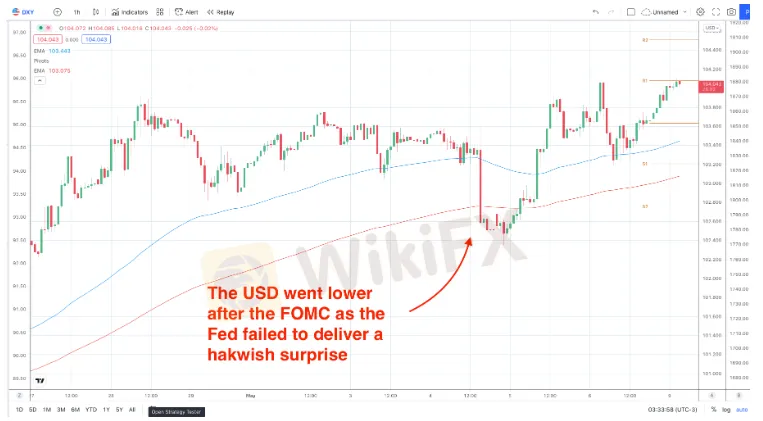
However, the USD weakness was not sustained post the FOMC. The strength in the USD is also partly due to the slowing global trade situation. As a global reserve currency, the USD tends to gain when global growth slows. So, the recent concerns over slowdowns in China‘s growth have also been a bullish pressure for the USD. This week we have some important inflation data out for the US. The US inflation rate is forecast to fall to 8.1% y/y down from the prior reading of 8.5%. Any signs of ’peak inflation take pressure off the Fed to hike rates and can result in some USD selling. This could boost the EURUSD this week as the ECB is increasingly making calls for a July rate hike. On the other hand, if inflation comes back in high then expect more USD strength.
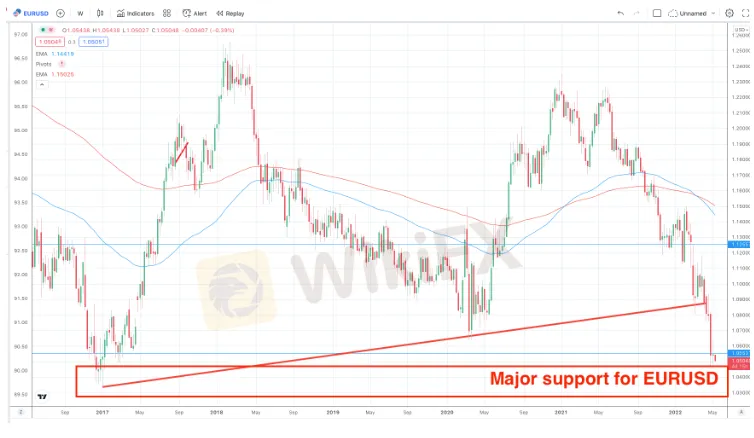

Disclaimer:
The views in this article only represent the author's personal views, and do not constitute investment advice on this platform. This platform does not guarantee the accuracy, completeness and timeliness of the information in the article, and will not be liable for any loss caused by the use of or reliance on the information in the article.
Read more
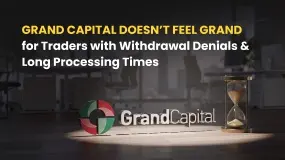
Grand Capital Doesn’t Feel GRAND for Traders with Withdrawal Denials & Long Processing Times
The trading environment does not seem that rosy for traders at Grand Capital, a Seychelles-based forex broker. Traders’ requests for withdrawals are alleged to be in the review process for months, making them frustrated and helpless. Despite meeting the guidelines, traders find it hard to withdraw funds, as suggested by their complaints online. What’s also troubling traders are long processing times concerning Grand Capital withdrawals. In this Grand Capital review segment, we have shared some complaints for you to look at. Read on!
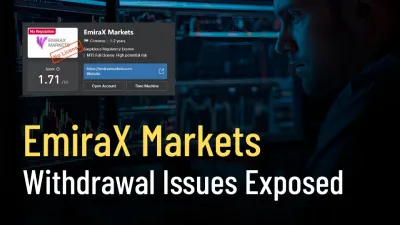
EmiraX Markets Withdrawal Issues Exposed
EmiraX Markets Review reveals unregulated status, fake license claims, and withdrawal issues. Stay safe and avoid this broker.
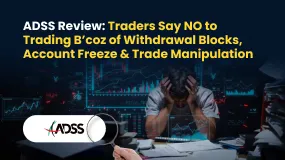
ADSS Review: Traders Say NO to Trading B’coz of Withdrawal Blocks, Account Freeze & Trade Issues
Does ADSS give you plenty of excuses to deny you access to withdrawals? Is your withdrawal request pending for months or years? Do you witness account freezes from the United Arab Emirates-based forex broker? Do you struggle to open and close your forex positions on the ADSS app? Does the customer support service fail to respond to your trading queries? All these issues have become a rage online. In this ADSS Broker review article, we have highlighted actual trader wordings on these issues. Keep reading!

INGOT Brokers Regulation 2025: ASIC vs Offshore License - What Traders Must Know
Explore INGOT Brokers regulation in 2025: Compare their ASIC and Seychelles FSA licenses, understand trader protection levels, and learn about potential risks in this detailed guide.
WikiFX Broker
Latest News
Mitrade Arabic Platform Targets MENA Gold Trading Boom
Israeli Arrested in Rome Over €50M Forex Scam
New FCA Consumer Alert 2025: Important Warning for All Consumers
EmiraX Markets Withdrawal Issues Exposed
Global Guide to Finding Forex IBs/Brokers — Share Your Pick and Win Big!
Consob Targets Political Deepfake “Clone Sites” and Unlicensed Platforms in Latest Enforcement Round
WikiEXPO Global Expert Interviews: Gustavo Antonio Montero: ESG in Finance
Trump tariffs are helping drive U.S. beef prices to new highs
Scam Alert: GINKGO-my.com is Draining Millions from Malaysians!
Ghost Global Limited (ghostgloballtd.com ) Review: Users Complain About Slow Replies, Fake Portfolio
Currency Calculator



